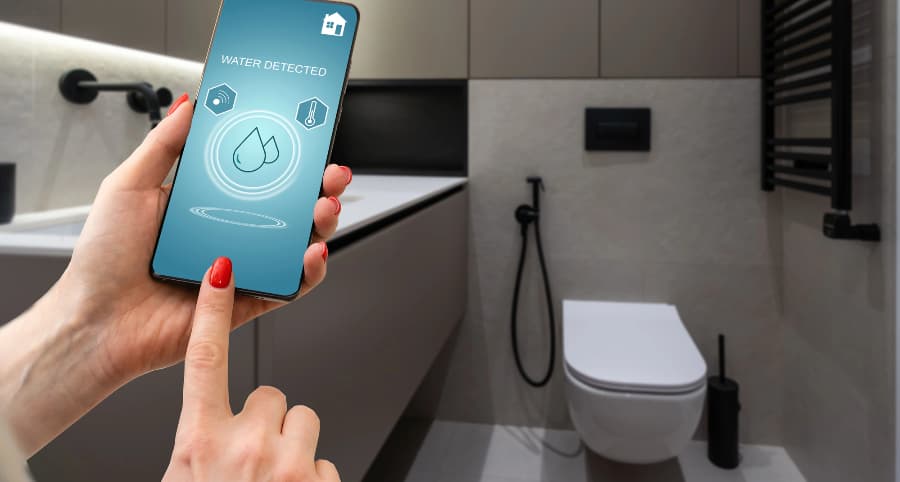How does a water sensor work and why connect one to your Cincinnati smart home?

One small leak at your house can lead to big difficulties and thousands in damage. You have to safeguard against this danger; fortunately, there’s a simple way to achieve this. A water sensor is an effective, simple, and budget-friendly solution. Explore how they work and why you might connect water sensors to your Cincinnati smart home.
How water sensors protect Cincinnati homes
Water enters homes in many ways, whether from a weather-related incident, plumbing issue, appliance malfunction, or simple human error. Whatever way it takes place, you have to know at once, and this is where water sensors come in. But how precisely do they work?
Many water sensors are conductive and work with a pair of electrodes. When water infiltrates the area between the electrodes, an electrical circuit is established, setting off your alarm. You’ll also come across capacitive sensors that release an electrical field. When water touches the conductive areas of these components, the field is broken, and your alarm triggers. Optical sensors using infrared LED light are an additional option.
Get more protection from water sensors
Some innovative water sensors provide even more defense as they have incorporated temperature sensors. This is a smart way to prevent pipe freezing. If there’s a severe drop in temperature, you’ll find out at once. Taking steps before pipes burst will shield you from water damage and costly repairs.
Why connect water sensors to your Cincinnati smart home?
When water problems happen, you have to be alerted at once. You can achieve this goal by connecting water sensors to your smart home. Whether you’re on site to hear the alarm or away, you’ll receive an instant update on your cell phone. In addition, your round-the-clock monitoring team will be informed. Every moment counts in a water emergency to control the damage and interruption to your life.
Where should you install water sensors?
Any spot prone to flooding is a suitable place for water sensors. Think about installing in these spots:
- Bathrooms: Position next to tubs or behind toilets.
- Basements: Water often enters lower floors through leaky walls or because of heavy rain or faulty sump pumps.
- Near water heaters or appliances: Any water-connected appliance may ultimately leak.
- Below sinks: Water sensors are ideal for detecting leaky pipes in areas not easy to see.
- Attics: Identify roof leaks promptly and prevent costly damage.
Get water sensors with your Vivint smart home
Give your residence the robust protection it requires with Vivint’s modern tools. Our water sensors in Cincinnati link to your Vivint mobile app to send you automatic notifications whenever your alarm activates. You also benefit from incorporated temperature sensors to avoid frozen pipes. Discover all the smart home components available in Cincinnati by reaching out to (513) 506-9171 today.